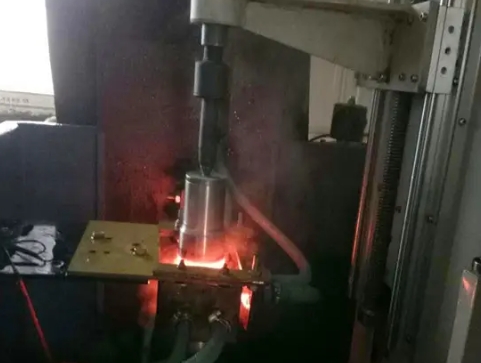- 24
- Aug
What is the difference between high frequency quenching and intermediate frequency quenching?
What is the difference between high frequency quenching and intermediate frequency quenching?
The working principle of high-frequency quenching and intermediate-frequency quenching is the same as that of induction heating: that is, the workpiece is placed in the inductor, and the inductor is generally a hollow copper tube inputting intermediate frequency or high frequency alternating current (1000-300000Hz or higher). The alternating magnetic field generates an induced current of the same frequency in the workpiece. The distribution of this induced current in the workpiece is uneven, it is strong on the surface, but very weak in the interior, and it is close to 0 in the center. This skin effect is used. , the surface of the workpiece can be heated rapidly, the surface temperature rises to 800-1000 ℃ in a few seconds, and the temperature of the core part is very small.
However, during the heating process, the distribution of the induced current in the workpiece is uneven, and the heating effect produced by different current frequencies is also different. Then, the difference between high-frequency quenching and intermediate-frequency quenching comes:
1. High frequency quenching
Current frequency between 100 and 500 kHz
Shallow hardened layer (1.5~2mm)
Advantages after high frequency quenching: high hardness, the workpiece is not easy to be oxidized, the deformation is small, the quenching quality is good, and the production efficiency is high
High-frequency quenching is suitable for parts that work under friction conditions, such as generally smaller gears and shafts (materials used are 45# steel, 40Cr)
2. Intermediate frequency quenching
The current frequency is 500~10000 Hz
The hardened layer is deep (3~5mm)
Intermediate frequency quenching is suitable for parts subjected to twisting and pressure loads, such as crankshafts, large gears, grinding machine spindles, etc. (the materials used are 45# steel, 40Cr, 9Mn2V and ductile graphite.
In short, one of the obvious differences between high-frequency quenching and intermediate-frequency quenching is the difference in heating thickness. High-frequency quenching can harden the surface in a short time, the crystal structure is very fine, and the structural deformation is small. Be small.

